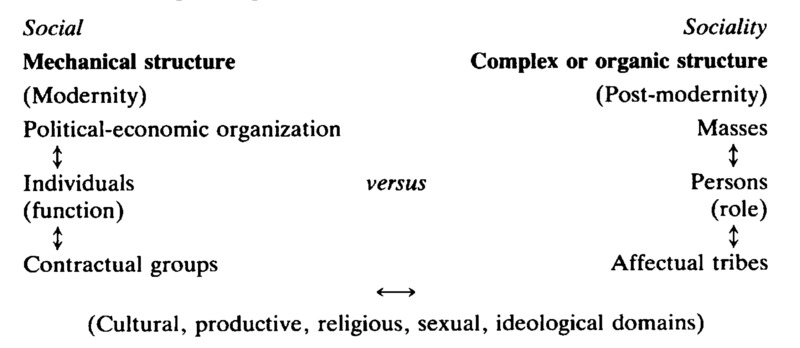The double hypothesis (shift and tension)
Item
-
Title
-
The double hypothesis (shift and tension)
-
Description
-
The reversible movement between formism and empathy can also account for the current shift in importance from an essentially mechanical social order towards a complex, predominantly organic structure. We are witnessing the usurping of linear History by the restorative myth; there is a return to a vitalism whose varied modulations I will attempt to show. …
The ambience is built on a fundamental paradox: the constant interplay between the growing massification and the development of micro-groups, which I shall call 'tribes'.
This appears to me the founding tension characterizing sociality at the end of the twentieth century. The masses, or the people – not to be confused with the proletariat or other classes – are not posited on a logic of identity; without any precise goals, they are not the subjects of historical movement. As for the metaphor of the tribe, it allows us to account for the process of disindividuation, the saturation of the inherent function of the individual and the emphasis on the role that each person (persona) is called upon to play within the tribe. It is of course understood that, just as the masses are in a state of perpetual swarm, the tribes that crystallize from these masses are unstable, since the persons of which these tribes are constituted are free to move from one to the other.
The [Figure] explains the shift under way and its resultant tension:
-
Designer
-
Maffesoli, Michel
-
Date
-
1988
-
Source
-
Time of Tribes: The Decline of Individualism in Mass Society
-
Bibliographic Citation
-
Maffesoli, Michel. 1996. Time of Tribes: The Decline of Individualism in Mass Society. Translated by Don Smith. Theory, Culture, & Society. Sage Publications. Pages 3-6. --- Maffesoli, Michel. 1988. Le Temps des tribus. Méridiens Klincksieck.

